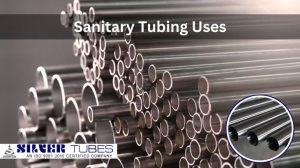Stainless steel is widely used in various industries due to its durability and corrosion-resistant properties. 304 stainless steel, in particular, is a popular choice for piping systems used in chemical and petrochemical plants, food and beverage processing, and pharmaceutical industries. Quenching and tempering are two heat treatment processes that enhance the mechanical properties and performance of 304 stainless steel pipes. This blog post will delve into the benefits of quenching and tempering 304 stainless steel pipes.
304 Stainless Steel Pipe is a high-grade stainless steel material. It is strong, resistant to corrosion and has excellent formability and weldability. The combination of its properties makes it one of the most popular grades available for all types of piping applications. Its resistance to oxidation makes it ideal for use in industrial environments where frequent exposure to corrosive agents may be an issue. In addition, because this grade of pipe has a high level of chromium content, it provides great shine and lustre that can last several years with proper maintenance.
Benefits of Quenching and Tempering 304 stainless steel pipe
1) Increased Strength and Toughness
Quenching and tempering are heat treatment processes that involve heating the steel to high temperatures, followed by rapid cooling (quenching) and reheating to a lower temperature (tempering). This process results in the formation of a strong and tough steel structure. The cooling process causes the steel to harden, increasing its strength, while tempering reduces its brittleness and improves toughness. These processes result in 304 ss pipes that are stronger, more resilient, and can withstand heavy-duty applications.
2) Resistant to Corrosion and Wear
304 stainless steel pipes, when quenched and tempered, boast improved resistance to both corrosion and wear. Corrosion is a significant issue regarding pipes and pipe fittings, as it can leak, break, and damage the pipeline system. Quenching and tempering 304 stainless steel pipes significantly reduce the likelihood of corrosion, increasing the durability of the pipeline system. Furthermore, quenching and tempering the steel increases its wear and tear resistance, allowing it to withstand erosion, abrasion, and impact.
3) Versatility
304 stainless steel pipes are incredibly versatile, and quenching and tempering make them even more so. The improved mechanical properties of quenched and tempered 304 stainless steel pipes make them useful in various industries and applications. They suit high-pressure systems, boilers, and pipelines requiring corrosion, wear, and fatigue resistance.
4) Reduced Maintenance Costs
Corrosion of pipeline systems and pipe fittings can significantly burden industries, resulting from exposure to chemicals and other corrosive agents. Regular maintenance and replacement of corroded pipes and fittings can be costly and time-consuming. Quenching and tempering 304 stainless steel pipes with improved resistance to corrosion significantly reduces the frequency of maintenance and replacement, reducing costs and streamlining processes.
5) Improved Productivity
The superior mechanical properties of quenched and tempered 304 stainless steel pipes provide a more reliable and safer pipeline system. This reliability improves productivity as the system can operate for extended periods without interruption, enabling more output and faster processing times.
Conclusion
Quenching and tempering 304 stainless steel pipes provide numerous benefits for industries that rely on highly durable and corrosion-resistant pipeline systems. The heat treatment processes significantly improve the material’s mechanical properties, increasing its strength, toughness, and resistance to wear. Additionally, quenching and tempering reduce the likelihood of corrosion, which reduces maintenance and replacement costs and improves productivity. These benefits make quenching and tempering 304 stainless steel pipes a smart choice for industries that require robust and reliable pipeline systems.






